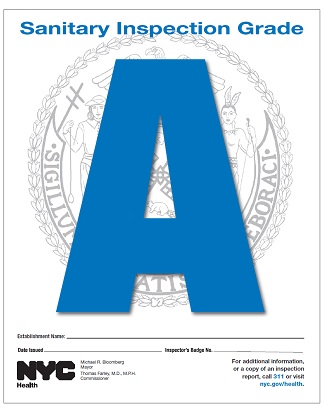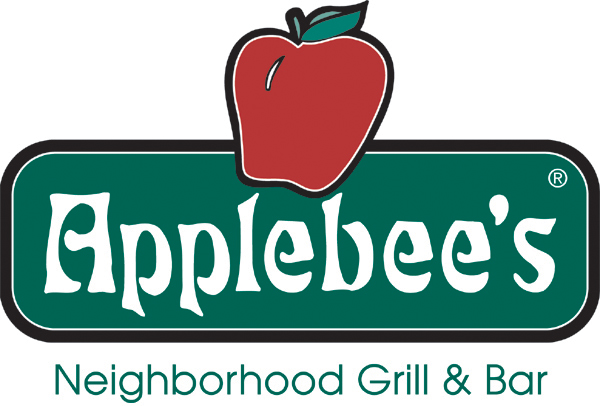The New York City Health Department published its new restaurant letter-grading rules Tuesday so next month, for the first time, signs bearing A, B or C ratings will be issued to the city’s more than 24,000 restaurants to publicly .jpg) announce their cleanliness.
announce their cleanliness.
The 8-by-10-inch placards are to be dated, and operators will be compelled to post them in windows or restaurant vestibules, making customers aware of inspectors’ ratings that were previously available only at the health department or on its Web site.
The department offered details of a fourth grading sign that diners will soon be seeing — the black-and-white “grade pending” placard. After an initial inspection, if a restaurant is given a B or C, it can publicly post those grades — or the owner can seek an administrative hearing to request an upgrade. The restaurant can then post a “grade pending” sign as an explanation to diners for the absence of a letter grade in the restaurant.
The new rules are available online at nyc.gov/health.
Dr. Thomas Farley, the health commissioner, said during a press conference Tuesday, June 15, 2010
“We hope that when people are making choices where to eat, they will eat at an A restaurant.” The restaurant industry “has often made dire predictions,” including when the city banned smoking in bars and restaurants and required calorie counts be posted at many eating places. “And none of those predictions came true.”
Like in Toronto eight years ago, where a red, yellow, green restaurant inspection disclosure system was implemented. Same thing is being said in London, Ontario, as the city contemplates a similar red, yellow, green disclosure system.
Todd Lewis, a Smoke’s Poutinerie diner, said seeing a yellow sign would make him think twice about eating at a restaurant, but he would want to know what the exact infraction is before making a final decision.
But some patrons think the signs are unnecessary and can at times be misleading.
Meagan Zettler, a regular at Yo-Yo’s Frozen Yogurt, said diners concerned about a restaurant’s infractions should check online to see if the eatery has any current health violations.
She thinks the signs can unnecessarily drive business away because they don’t list the exact health infractions.
For now, Londoners worried about a restaurant’s violations can visit http://inspection.healthunit.com to check it out.
Valid concerns, and the worst way to doom a disclosure system is to oversell the system, something the Washington-based Center for Science in the Public Interest does routinely, like when they said yesterday Los .jpg) Angeles has been doing restaurant grading for over 10 years with great results—including a documented 20 percent decrease in hospitalizations due to foodborne illness.
Angeles has been doing restaurant grading for over 10 years with great results—including a documented 20 percent decrease in hospitalizations due to foodborne illness.
Correlating restaurant inspection disclosure with incidence of foodborne illness is fraught with difficulties. Disclosure provides some information – and it is just a snapshot in time – but helps enhance a culture of restaurant diners that value microbiologically safe food.
Filion, K. and Powell, D.A. 2009. The use of restaurant inspection disclosure systems as a means of communicating food safety information. Journal of Foodservice 20: 287-297.
??Abstract?
The World Health Organization estimates that up to 30% of individuals in developed countries become ill from food or water each year. Up to 70% of these illnesses are estimated to be linked to food prepared at foodservice establishments. Consumer confidence in the safety of food prepared in restaurants is fragile, varying significantly from year to year, with many consumers attributing foodborne illness to foodservice. One of the key drivers of restaurant choice is consumer perception of the hygiene of a restaurant. Restaurant hygiene information is something consumers desire, and when available, may use to make dining decisions.


 Good for them, although no research has been done comparing the effectiveness of various disclosure systems – letters (proposed NYC display, right), colors (like in Toronto), smiley faces (like in Denmark), and the prominence of the display (big signs in front windows or little signs behind the greeters table).
Good for them, although no research has been done comparing the effectiveness of various disclosure systems – letters (proposed NYC display, right), colors (like in Toronto), smiley faces (like in Denmark), and the prominence of the display (big signs in front windows or little signs behind the greeters table). Letter grades will make the inspection process more transparent, giving every potential customer instant access to important information. At the same time, the risk-based inspection schedules will focus City resources on restaurants that warrant the most scrutiny. The Health Department plans to enact the new system in July.
Letter grades will make the inspection process more transparent, giving every potential customer instant access to important information. At the same time, the risk-based inspection schedules will focus City resources on restaurants that warrant the most scrutiny. The Health Department plans to enact the new system in July. Last year, some publication at the University of California at Los Angeles – UCLA – warned students that beer pong, a communal drinking game,
Last year, some publication at the University of California at Los Angeles – UCLA – warned students that beer pong, a communal drinking game, 
 After pleading guilty to charges of animal cruelty and attempted burglary on Wednesday, 17-year-old Cheyenne Cherry confronted a row of animal activists outside the courtroom. Cherry stuck out her tongue and told the activists that the kitten named Tiger Lily was dead.
After pleading guilty to charges of animal cruelty and attempted burglary on Wednesday, 17-year-old Cheyenne Cherry confronted a row of animal activists outside the courtroom. Cherry stuck out her tongue and told the activists that the kitten named Tiger Lily was dead. Between Friday night and dawn on Monday, the Riese Organization intends to convert 13 Dunkin’ Donuts stores into the city’s first Tim Hortons restaurants, including early-morning, high-traffic shops like the one in Pennsylvania Station and another next to the New York Stock Exchange. The switch may surprise regular customers of the shops, said Dennis Riese, chief executive of the Riese Organization.
Between Friday night and dawn on Monday, the Riese Organization intends to convert 13 Dunkin’ Donuts stores into the city’s first Tim Hortons restaurants, including early-morning, high-traffic shops like the one in Pennsylvania Station and another next to the New York Stock Exchange. The switch may surprise regular customers of the shops, said Dennis Riese, chief executive of the Riese Organization. Tim Horton
Tim Horton The Carrollton, Texas, company says Friday it asked the New York State Police to open a criminal investigation into product tampering. Spokeswoman Amy Freshwater said the snakehead was sent for testing at an independent laboratory that confirmed it had never been cooked and was added to the cooked broccoli.
The Carrollton, Texas, company says Friday it asked the New York State Police to open a criminal investigation into product tampering. Spokeswoman Amy Freshwater said the snakehead was sent for testing at an independent laboratory that confirmed it had never been cooked and was added to the cooked broccoli. Shigella – it only comes from fecal material.
Shigella – it only comes from fecal material.
 That’s the advice from Erie County Health Commissioner Dr. Anthony J. Billittier IV after a dead deer was discovered being butchered in a restaurant.
That’s the advice from Erie County Health Commissioner Dr. Anthony J. Billittier IV after a dead deer was discovered being butchered in a restaurant.
 Anyone who handled or ate raw produce purchased from the Wegmans on Sheridan Drive since January 7th is asked to contact their doctor or get treated at free clinics this weekend.
Anyone who handled or ate raw produce purchased from the Wegmans on Sheridan Drive since January 7th is asked to contact their doctor or get treated at free clinics this weekend..jpg)